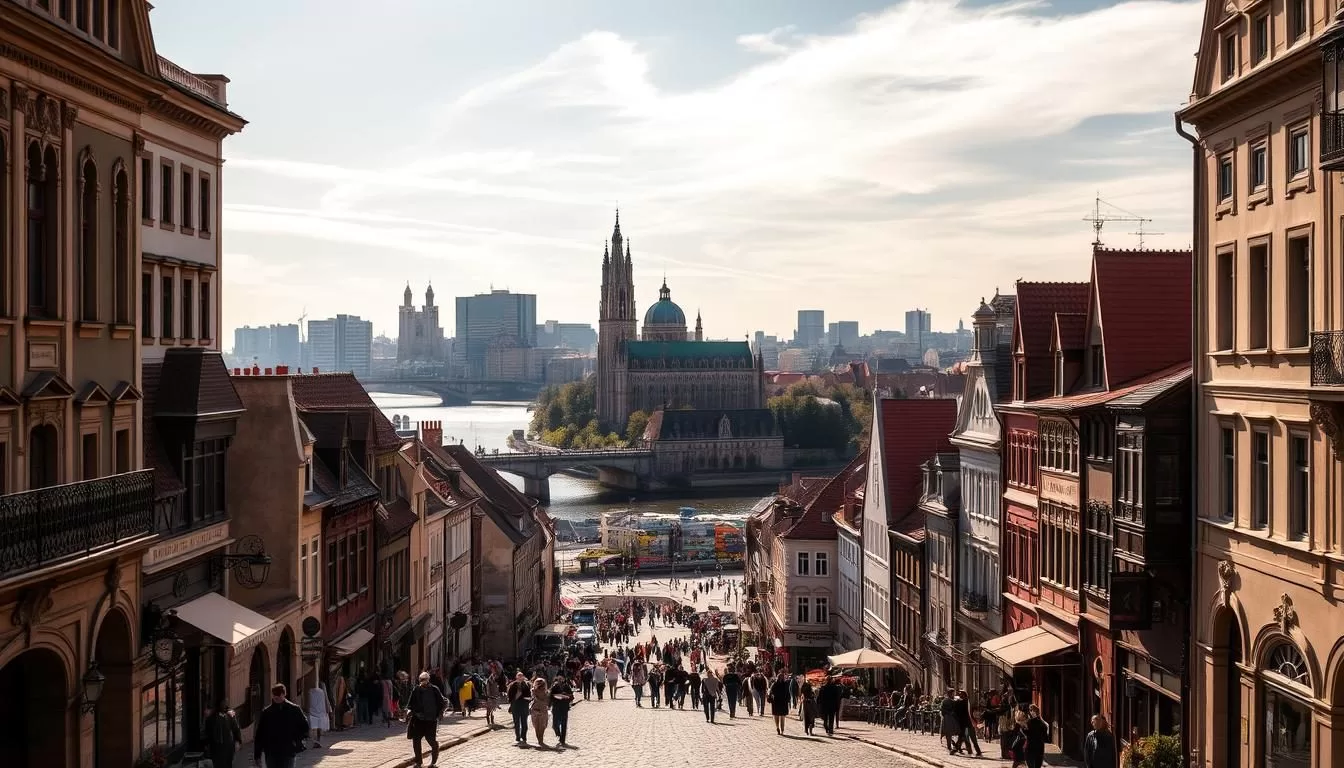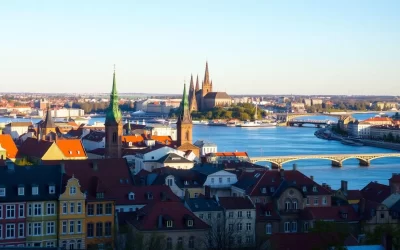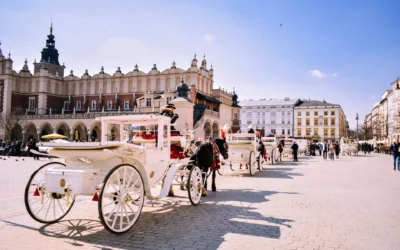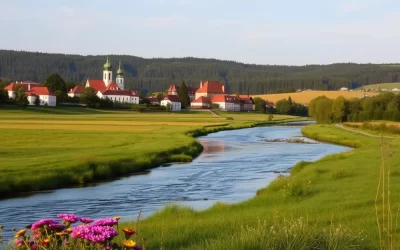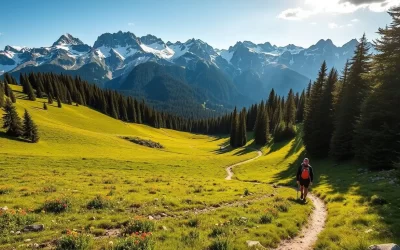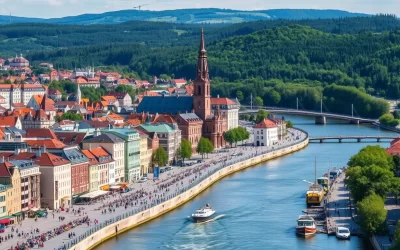Welcome to Wrocław, a charming city in Poland that’s quickly gaining recognition among travelers seeking authentic European experiences. As you explore this vibrant city, you’ll discover a perfect blend of historical architecture, cultural scenes, and delicious Polish cuisine.
This comprehensive guide will walk you through the absolute best things to do in Wrocław, from the colorful Old Town to the famous dwarf statues scattered throughout the city. You’ll uncover why Wrocław was voted the European Capital of Culture in 2016 and why it continues to captivate visitors with its unique charm.
Whether you’re planning a weekend getaway or a longer stay, this guide covers everything you need to know.
Discovering Wrocław: Poland’s Hidden Gem
If you’re looking for a Polish city that’s off the beaten path, Wrocław is the perfect destination for you. This vibrant city offers a unique blend of history, culture, and entertainment that’s sure to captivate your senses.
Why Wrocław Should Be on Your Travel Radar
Wrocław remains one of Poland’s best-kept secrets, offering all the charm and history of more famous Polish cities like Krakow and Warsaw but with fewer crowds and more authentic local experiences. As a city with a rich heritage, Wrocław boasts a unique cultural melting pot that’s visible in its architecture, cuisine, and traditions. You’ll find that the city’s youthful energy, fueled by over 100,000 students, makes it an exciting destination for travelers.
The city’s vibrant nightlife, innovative restaurants, and thriving cultural scene rival those of much larger European capitals, making Wrocław an excellent choice for your next travel destination.
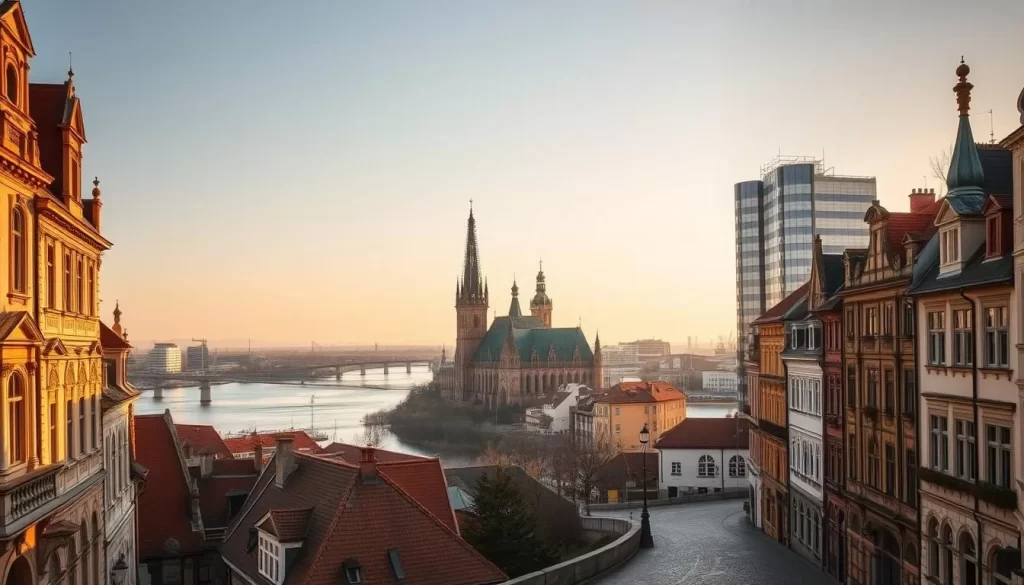
A Brief History of This Vibrant City
Wrocław has a complex history spanning over 1,000 years, having changed hands numerous times throughout its existence. It has belonged to Poland, Bohemia, Austria, Prussia, Germany (as Breslau), and finally returned to Poland after World War II. This diverse heritage has created a fascinating cultural landscape that’s worth exploring. As you wander through the city, you’ll discover a unique blend of architectural styles, cultural traditions, and historical landmarks that make Wrocław a compelling destination for anyone interested in history and culture.
With its rich history and cultural significance, Wrocław serves as an excellent base for exploring the Lower Silesia region, making it a great guide for travelers looking to experience the best of Poland.
Exploring the Stunning Old Town
As you step into Wrocław’s Old Town, you’ll be transported to a world of vibrant colors and rich history. This historic district is a treasure trove of architectural marvels, cultural experiences, and delightful surprises waiting to be discovered.
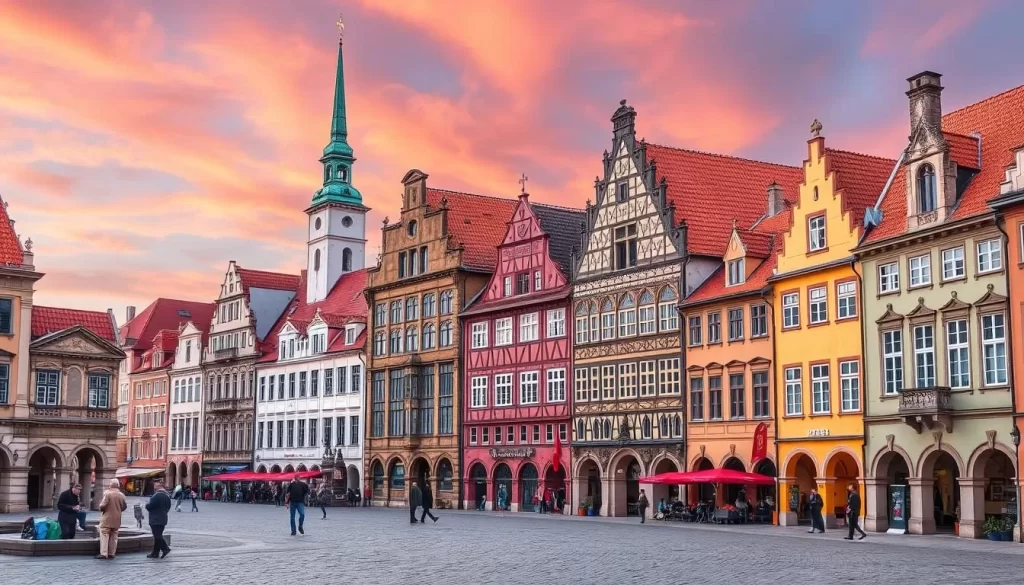
Market Square (Rynek) – The Heart of Wrocław
The Market Square (Rynek) is the pulsating heart of Wrocław’s Old Town, boasting an impressive array of colorful tenement houses that date back centuries. As one of the largest market squares in Europe, measuring 205 x 175 meters, it’s a must-visit destination for anyone exploring Wrocław. You’ll be captivated by the vibrant atmosphere, perfect for people-watching, shopping, and savoring local cuisine at one of the many eateries.
Old Town Hall and Its Astronomical Clock
At the center of the Market Square stands the magnificent 13th-century Old Town Hall, a testament to Wrocław’s rich history. Be sure to admire the Astronomical Clock, a remarkable feature that adds to the square’s charm. The Old Town Hall also houses the Museum of Bourgeois Art, where you can marvel at the stunning Great Hall.
Salt Market Square and the 24/7 Flower Market
Just a stone’s throw from the main Market Square lies the charming Salt Market Square (Plac Solny), known for its vibrant 24/7 flower market. This picturesque square gets its name from the salt wagons that used to arrive here during the Middle Ages. Today, it’s a delightful spot to explore, with fresh flowers available at any time, even during holidays and early morning hours.
Hunt for the Famous Wrocław Dwarfs
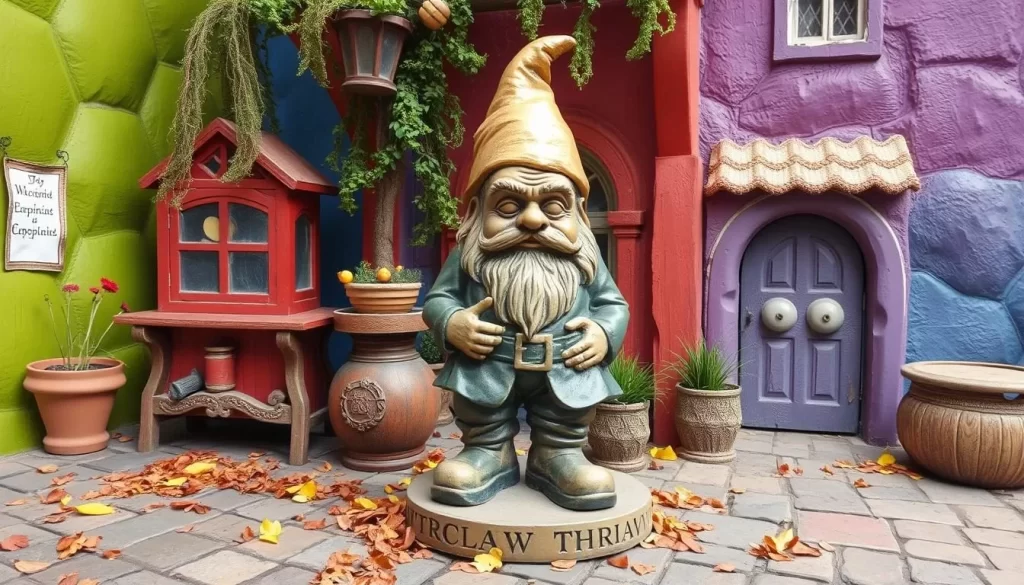
As you wander through Wrocław, you’ll stumble upon a whimsical phenomenon – hundreds of miniature dwarf sculptures scattered across the city. This delightful activity is not just fun; it’s a journey through the city’s history and culture. With over 400 dwarf statues, some sources even claim up to 800, you’ll be engaged in one of the most delightful and family-friendly activities Wrocław has to offer.
The Fascinating History Behind the Dwarfs
The Wrocław dwarfs have a rich and fascinating history that dates back to the 1980s. They originated from the Orange Alternative, an anti-communist movement that used dwarf graffiti as a form of peaceful protest. The first bronze dwarf statue was installed in 2001 on Świdnicka Street, commemorating this movement. Since then, the dwarfs have become a beloved symbol of the city, each with its own unique personality, profession, and story.
Where to Find the Most Unique Dwarf Statues
To make the most of your dwarf-hunting adventure, you can pick up a dwarf map from the Tourist Information Center in the Market Square or download one of several dwarf-finding apps available for smartphones. Some of the most unique dwarfs can be found in unexpected places, such as the train station. You’ll discover firefighter dwarfs, banker dwarfs, and even dwarfs representing local businesses and institutions throughout the city.
Tips for a Successful Dwarf Hunt
For a more structured experience, consider joining one of the specialized dwarf-hunting tours. These tours not only help you find the dwarfs but also share fascinating stories about Wrocław’s history and culture. Additionally, using a map or an app can enhance your experience, ensuring you don’t miss out on any of the hidden gems.
Cathedral Island (Ostrów Tumski): The Oldest Part of the City
With a history dating back over 1,000 years, Cathedral Island is the cradle of Wrocław, offering a glimpse into the city’s fascinating past. This historic district is not just a place to visit; it’s a journey through time, showcasing the city’s evolution over the centuries.

Cathedral of St. John the Baptist
The Cathedral of St. John the Baptist is the crown jewel of Cathedral Island, standing tall at 98 meters with its twin spires dominating Wrocław’s skyline. This magnificent Gothic structure is not only a testament to the city’s rich history but also offers visitors a chance to climb to an observation deck for panoramic views of the city.
The cathedral’s history is deeply intertwined with that of Wrocław, having been built over several centuries. Its architecture reflects various styles, making it a fascinating subject for historians and architecture enthusiasts alike.
The Lamplighter Tradition
One of the most enchanting experiences on Cathedral Island is the lamplighter tradition, which takes place every evening. A lamplighter, dressed in traditional attire, manually lights all 103 gas lanterns using a long pole, creating a magical ambiance. This tradition is one of only two such practices in the European Union, making it a unique experience for visitors.
The lamplighter’s task is not just a routine; it’s a preservation of history and a nod to the city’s heritage, adding to the island’s charm and character.
Cathedral Bridge and Its Love Locks
The Cathedral Bridge, or Most Tumski, is a beautiful pedestrian bridge that connects Cathedral Island to the rest of Wrocław. Historically, it marked the boundary between city and church jurisdiction, offering sanctuary to those fleeing city authorities. While the bridge was once adorned with love locks, these were removed in 2019, and visitors are now discouraged from attaching new ones.
Despite the absence of love locks, the bridge remains a significant landmark and a popular spot for visitors, offering beautiful views of the Oder River and the surrounding cityscape.
Cathedral Island is a testament to Wrocław’s rich history and cultural heritage, making it a must-visit destination for anyone interested in exploring the city’s oldest part. With its stunning architecture, historic traditions, and picturesque landscapes, Cathedral Island offers a unique and unforgettable experience.
University of Wrocław: Baroque Beauty and Panoramic Views
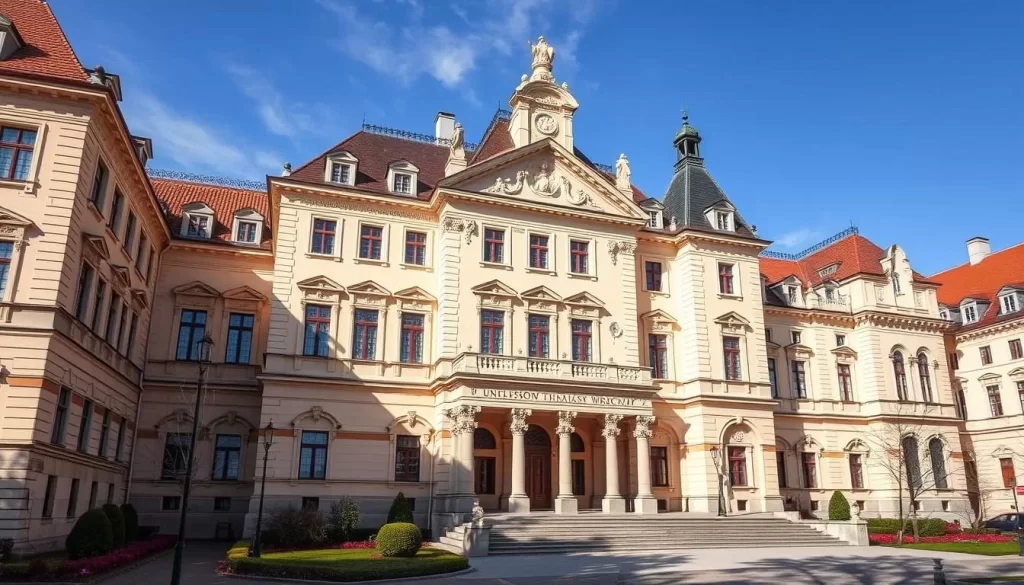
The University of Wrocław is a must-visit destination, boasting one of the most stunning examples of baroque style in Poland. Founded in 1702, it stands as a testament to the city’s rich history and architectural heritage. As you explore the university, you’ll be struck by the grandeur of its main building, which features one of the longest baroque facades in the world.
The Mathematical Tower Viewpoint
The Mathematical Tower offers a breathtaking view of the city, providing a 360-degree panorama of Wrocław’s historic center and beyond. After climbing to the top, you’ll be rewarded with stunning vistas that showcase the city’s layout and highlight its most notable landmarks.
Aula Leopoldina and Oratorium Marianum
Inside the university, you’ll discover two of its most impressive baroque halls: the Aula Leopoldina and the Oratorium Marianum. The Aula Leopoldina, with its stunning frescoes and gilded ornaments, is a masterpiece of baroque interior design. The Oratorium Marianum, often referred to as “Wrocław’s little Sistine Chapel,” features magnificent ceiling paintings and serves as an important concert venue.
The University’s Historical Significance
The University of Wrocław has played a significant role in the city’s intellectual history for over three centuries. As a center of academic excellence, it has produced numerous Nobel Prize winners and has been a cornerstone of learning throughout the changing political landscapes of the 18th, 19th, and 20th century. This historic building is not just a testament to the city’s past but also a vibrant part of its present, attracting visitors from all over the world to marvel at its beauty and significance in the city of Wrocław.
Wrocław, Poland: Best Things to Do for Museum Lovers
Wrocław’s cultural landscape is dotted with museums, each offering a unique perspective on the city’s history, art, and technology. As you explore this vibrant city, you’ll discover that it’s a treasure trove for museum enthusiasts, with a variety of cultural experiences that are sure to enrich your travel itinerary.
Panorama Racławicka – A 360° Painting Experience
The Panorama Racławicka is one of Wrocław’s most famous attractions, featuring a massive 360-degree painting that measures 15 meters high and 114 meters in circumference. This immersive art experience depicts the 1794 Battle of Racławice during Poland’s fight for independence. To fully appreciate this unique exhibit, be sure to book your tickets in advance as visitor numbers are limited.
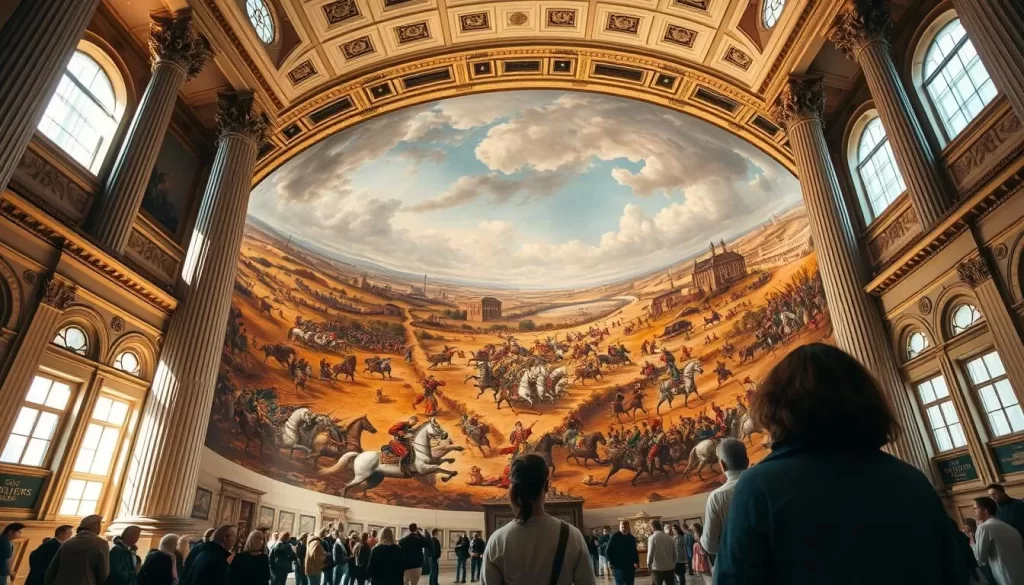
National Museum and Contemporary Art Museums
The National Museum in Wrocław is another must-visit, showcasing an impressive collection of Polish art from medieval to modern times. For contemporary art enthusiasts, the Wrocław Contemporary Museum and the Four Domes Pavilion (Museum of Contemporary Art) offer cutting-edge exhibitions featuring works by Polish and international artists.
| Museum | Focus | Notable Feature |
|---|---|---|
| National Museum | Polish art from medieval to modern times | Impressive collection of Polish art |
| Wrocław Contemporary Museum | Contemporary art | Located in a former German air-raid shelter |
| Four Domes Pavilion | Contemporary art | Features international artists |
Unique Museums: Games and Computers of the Past
For a different kind of cultural experience, visit the Museum of Games and Computers of the Past. This interactive museum allows you to explore the history of technology by playing with vintage gaming consoles and computers. It’s a nostalgic journey that’s sure to delight both adults and children.
In conclusion, Wrocław offers a rich cultural experience for museum lovers, with its diverse range of museums showcasing art, history, and technology. Whether you’re interested in historical artifacts, contemporary art, or nostalgic technology, Wrocław’s museums are among the best things to do in this captivating city.
Four Temple District: A Symbol of Religious Harmony
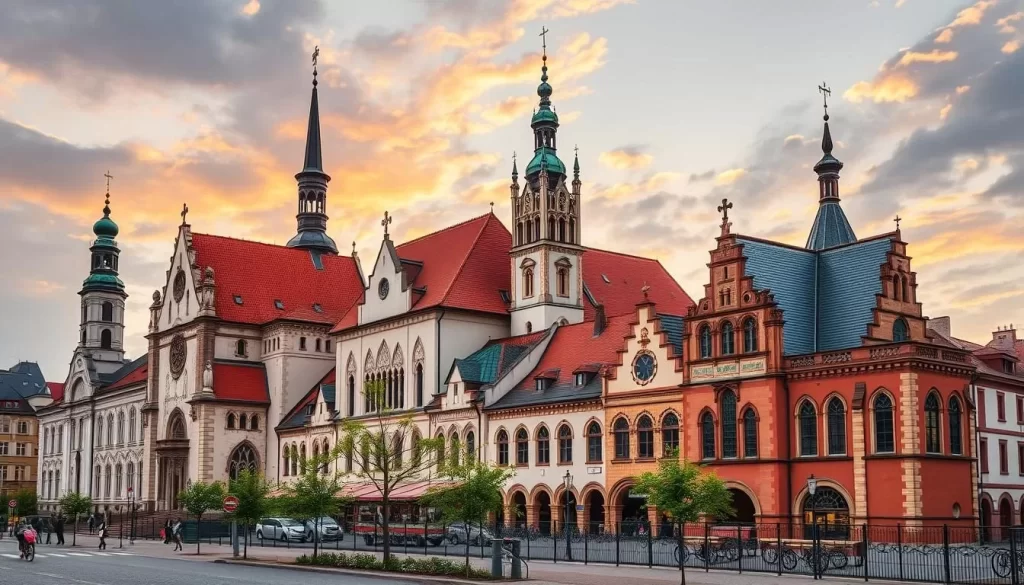
As you explore Wrocław, you’ll discover the Four Temple District, a symbol of peaceful coexistence among different faiths. This remarkable area is home to four distinct houses of worship, representing different religious communities that have lived together in harmony for centuries.
The Four Religious Sites and Their History
The Four Temple District gets its name from the four religious sites located within its boundaries: the Orthodox Cathedral of the Nativity of the Most Holy Mother of God, the Roman Catholic Church of St. Anthony of Padua, the Augsburg Evangelical Church of Divine Providence, and the White Stork Synagogue. Each of these buildings is not only a significant part of the city’s history but also a testament to the religious tolerance that defines Wrocław.
The district’s history is a fascinating story of how different religious communities came together, creating a unique cultural landscape. The presence of these four religious sites in such close proximity is a rare find in many parts of the world, making the Four Temple District a truly special part of Wrocław’s city life.
Cultural Events and Atmosphere
Beyond its historical significance, the Four Temple District has evolved into a vibrant cultural hub. The area is now known for its lively atmosphere, with numerous cafés, restaurants, and cultural venues nestled among the historic buildings. The White Stork Synagogue, in particular, hosts various cultural events, including concerts and exhibitions that celebrate Jewish heritage and contribute to the district’s dynamic life.
The Crystal Planet sculpture at the entrance to the district has become a popular meeting point, symbolizing unity in a multicultural world. As you explore this part of Wrocław, you’ll experience the perfect blend of history, culture, and community spirit that makes the Four Temple District a must-visit destination.
Neon Side Gallery: Soviet-Era Art Reimagined
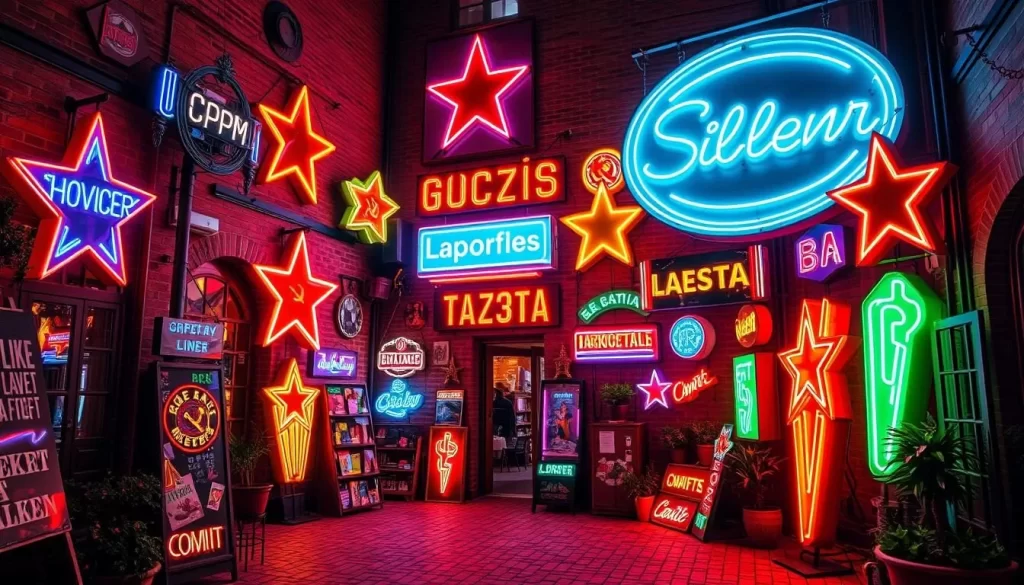
In the heart of Wrocław, a hidden courtyard at Ruska 46c is home to the Neon Side Gallery, a unique cultural hub. This fascinating outdoor exhibit features a collection of restored Soviet-era neon signs that once illuminated the city’s streets.
The History of Neon in Poland
During the communist era, neon signs represented a rare form of artistic expression and commercial advertising permitted by the authorities. These signs became an integral part of Poland’s visual cultural history. The Neon Side Gallery preserves this heritage by showcasing a vibrant array of these relics, offering visitors a glimpse into Poland’s past.
The gallery’s collection is a testament to the craftsmanship and design elements of the time, providing a unique perspective on the aesthetic of the era.
Best Time to Visit and Photography Tips
The best time to visit the Neon Side Gallery is after sunset when the neon signs are fully illuminated, creating a photographer’s paradise. The vibrant lights against the stark gray courtyard backdrop make for stunning photographs. Even during the day, the gallery is worth visiting to appreciate the signs’ craftsmanship and design.
To make the most of your visit, plan your trip as part of an evening exploring Wrocław’s alternative scene. The area surrounding the gallery has developed into a cultural hub with bars, galleries, and creative spaces, making it a great way to spend an evening. Be sure to take your camera to capture the signs at their best time.
Exploring Wrocław’s Unique Neighborhoods
Wrocław’s diverse neighborhoods are a treasure trove of local culture and authentic experiences waiting to be explored. As you venture beyond the tourist-heavy Old Town, you’ll discover that each area has its own distinct character, offering a glimpse into the daily lives of the people who live there.
Nadodrze: The Hipster Haven
Nadodrze, often referred to as “Wrocław’s Kreuzberg,” has transformed from a neglected area into the city‘s hippest neighborhood. Here, pre-war tenement houses now host art galleries, craft workshops, independent boutiques, and trendy cafés. As you explore Nadodrze, look out for the fascinating faded German ghost signs on buildings, remnants from when Wrocław was the German city of Breslau, alongside vibrant new street art that represents the area‘s creative renaissance.
- Discover unique boutiques and art galleries.
- Enjoy coffee at one of the many trendy cafés.
- Explore the street art scene.
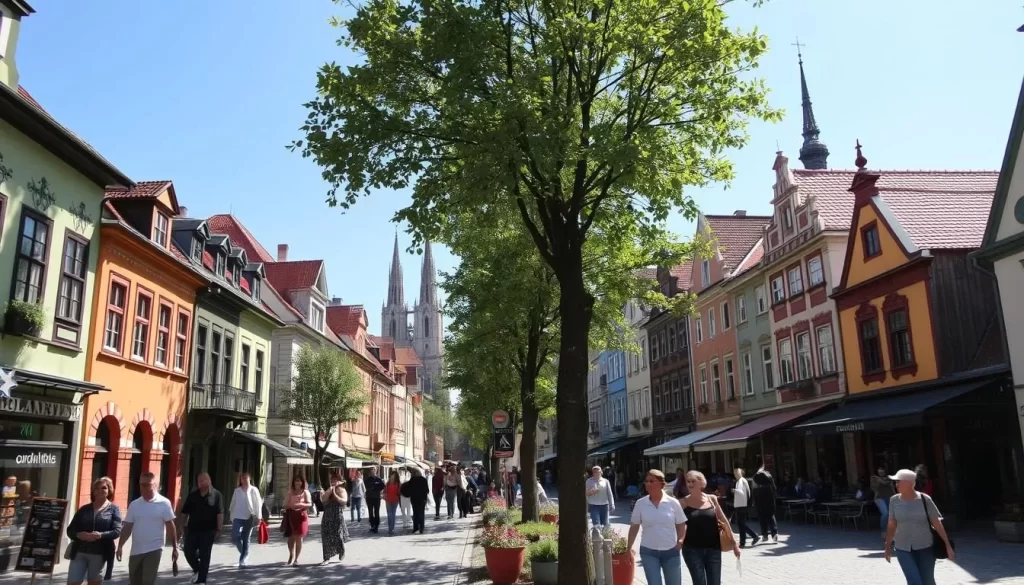
Słodowa Island: Where Locals Gather
Słodowa Island becomes the social heart of the city during warm weather, where people of all ages gather to relax, picnic, and socialize. It’s also the only public place in Wrocław where drinking alcohol outdoors is permitted, making it especially popular with the younger crowd. For the best local experience, visit Słodowa Island around sunset when the atmosphere is at its most magical.
- Enjoy the sunset with a drink.
- Experience the local culture and social scene.
- Relax in a lively atmosphere.
Other places worth exploring include the elegant Ołbin district with its Art Nouveau architecture, the green and residential Biskupin area, and the increasingly trendy Przedmieście Oławskie.
Architectural Wonders Beyond the Old Town
As you explore Wrocław, you’ll uncover a multitude of architectural gems that extend far beyond the historic Old Town. The city’s rich history is reflected in its diverse architectural landscape, featuring a wide range of styles from Gothic and Renaissance to Modernist and Brutalist.
Centennial Hall – UNESCO World Heritage Site
The Centennial Hall, designed by Max Berg and completed in 1913, is a masterpiece of modern architecture and a UNESCO World Heritage Site. This revolutionary reinforced concrete structure was built to commemorate the 100th anniversary of the Battle of Leipzig and can seat up to 6,000 people. You can visit the Centennial Hall complex daily from 9:00 AM to 6:00 PM for 19 zlotys.
WUWA District and Modernist Architecture
The WUWA district is a fascinating example of modernist architecture, showcasing a model housing estate created for the 1929 exhibition. This Bauhaus-inspired neighborhood offers a unique glimpse into early 20th-century design principles, with its minimalist and affordable accommodations. As you walk through WUWA, you’ll feel like you’re stepping into an open-air museum.
Beyond these iconic sites, Wrocław’s architecture is dotted with other treasures, including striking Art Nouveau buildings around Plac Grunwaldzki, imposing communist-era structures like the “Manhattan” apartment blocks, and numerous Gothic and Baroque churches. For a comprehensive understanding of the city’s architectural evolution, consider taking a specialized architecture tour.
Culinary Experiences in Wrocław
If you’re looking for a city that serves up delicious and authentic Polish food, Wrocław is the place to be. The city offers a diverse culinary scene that reflects Poland’s rich history and cultural heritage.
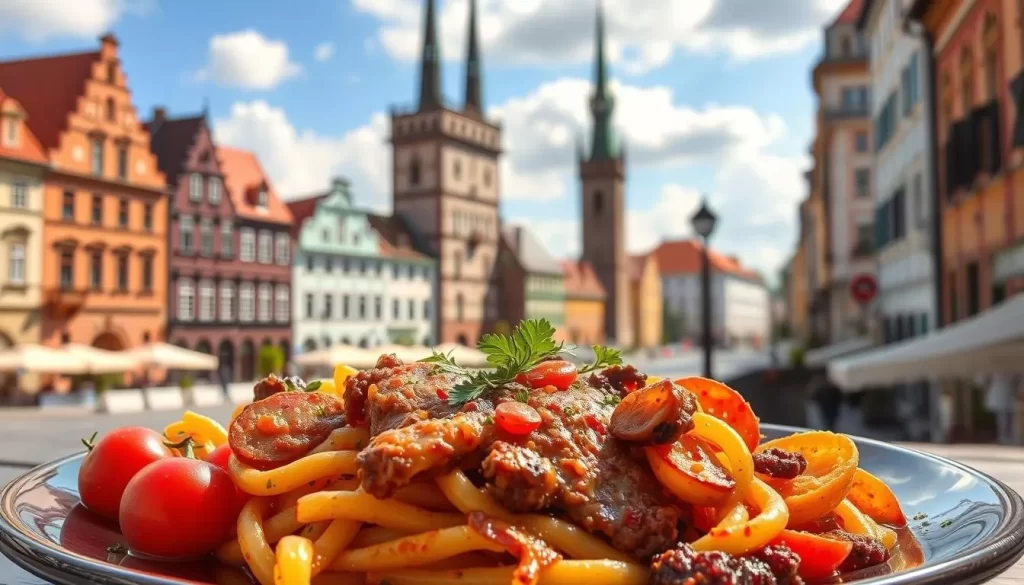
Traditional Polish Cuisine and Where to Find It
Polish cuisine is one of the most underrated food traditions in Europe, and Wrocław offers numerous opportunities to sample authentic dishes. You can try traditional Polish cuisine at various places throughout the city. Must-try dishes include pierogi (filled dumplings), bigos (hunter’s stew), and placki ziemniaczane (potato pancakes). For an authentic experience, visit Konspira, a restaurant known for its delicious Polish food and unique dining environment.
At Konspira, you’ll not only enjoy excellent traditional Polish food, but you’ll also have the chance to dine in a “secret” room decorated like a communist-era living room, creating an immersive historical experience. This is a great way to spend your time in Wrocław, exploring the city’s culinary delights.
Milk Bars: A Taste of Communist-Era Dining
For a budget-friendly and authentic Polish food experience, visit one of Wrocław’s milk bars (bar mleczny). These cafeteria-style eateries date back to the communist era and serve simple, homestyle Polish food at remarkably low prices. Bar Karmazyn in Hala Targowa is a local favorite, offering a taste of traditional Polish cuisine in a no-frills setting. You can enjoy your meal at any time, making it a convenient option.
Craft Beer Scene in Wrocław
Wrocław has embraced the craft beer revolution, with numerous brewpubs and taprooms throughout the city. You can visit AleBrowar near the Neon Side Gallery or Browar Stu Mostów to sample locally brewed specialties. The city’s craft beer scene is thriving, making it a great place to explore during your visit. Whether you’re a beer enthusiast or just looking to try something new, Wrocław’s craft beer scene is worth your time.
Image of a craft brewery in Wrocław
Café Culture: Wrocław’s Cozy Coffee Spots
The café culture in Wrocław is thriving, offering a unique blend of traditional and modern coffee experiences. As you explore this vibrant city, you’ll find that its cafes are not just places to grab a quick coffee, but destinations where you can spend a leisurely afternoon or productive work session.
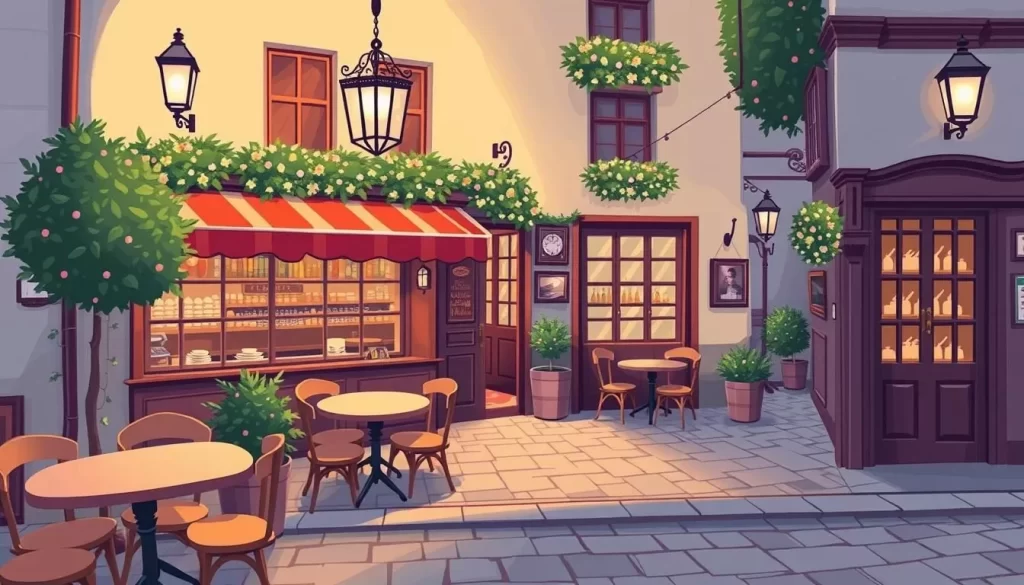
Historic Cafés in the Old Town
Wrocław’s Old Town is home to charming historic cafés that have been serving patrons for generations. These cafés, housed in centuries-old buildings, offer a glimpse into the past while serving some of the best coffee in town. You can enjoy traditional Polish cakes and pastries alongside your coffee in an atmosphere that transports you back in time.
Some of these historic gems are tucked away on quiet streets, while others are prominently located on the Market Square, making them perfect spots to people-watch while sipping your coffee.
Trendy Coffee Shops for Digital Nomads
For those who need a reliable Wi-Fi connection and a comfortable workspace, Wrocław’s trendy coffee shops are the perfect places to be. Spots like Vinyl Cafe, which combines coffee with vinyl records, and OTO Coffee Bar, known for its exceptional pour-overs, cater to the city’s young, cosmopolitan population and digital nomads alike.
These modern coffee shops not only serve excellent coffee but also provide a vibrant atmosphere that reflects the city’s dynamic spirit. Whether you’re working remotely or just need a caffeine boost, these cafes are sure to meet your needs.
In Wrocław, you can experience the best of both worlds: historic charm and modern convenience. Whether you’re in the mood for a traditional coffee experience or a specialty brew, the city’s cafes have something for everyone. Take your time to explore these cozy spots and enjoy the local coffee culture.
Shopping and Markets in Wrocław
Wrocław is a shopper’s paradise, featuring everything from historic market halls to trendy vintage shops. You’ll find a diverse range of shopping experiences that cater to all tastes and preferences.
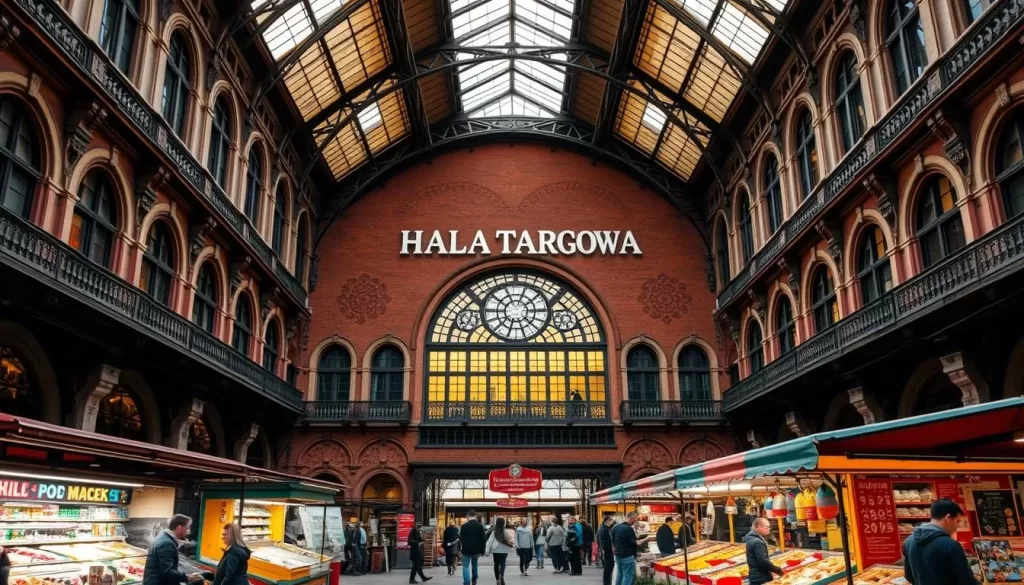
Hala Targowa Market Hall
Hala Targowa, or the Market Hall, is a must-visit destination for anyone looking to experience the local culture and cuisine. As you step inside, you’ll be surrounded by a vibrant array of fresh produce, meats, and regional specialties. This bustling indoor market is not just about food; it’s a one-stop-shop where you can find souvenirs, get t-shirts printed, or even grab a coffee.
The Market Hall is a great place to mingle with locals and experience everyday Polish life. Whether you’re looking for traditional products or just want to explore, Hala Targowa is an essential stop during your visit to Wrocław.
Vintage and Independent Shops
If you’re on the hunt for unique souvenirs or vintage clothing, Wrocław’s independent shops are a treasure trove. The Old Town and surrounding areas are home to numerous boutiques selling Polish-designed clothing, accessories, and home goods. For vintage enthusiasts, the Nadodrze district is a must-visit, with shops like Not Only Vintage, Cindy Vintage, and L’Attribut Vintage offering curated second-hand items.
These independent shops not only provide a chance to find one-of-a-kind souvenirs but also give insight into Poland’s fascinating fashion history.
Seasonal Markets and Flea Markets
Wrocław hosts various markets throughout the year, including the magical Christmas Market in the Old Town Market Square. This seasonal market features handcrafted ornaments, traditional foods, and mulled wine, creating a festive atmosphere. Additionally, the city hosts flea markets like the Świebodzki Bazaar, where you can find everything from vintage Polish posters to communist-era memorabilia.
Day Trips from Wrocław
Beyond Wrocław’s charming streets, the Lower Silesia region beckons with a multitude of fascinating attractions. You can easily spend a day exploring the surrounding area, discovering unique places and experiencing the rich history and culture of the region.
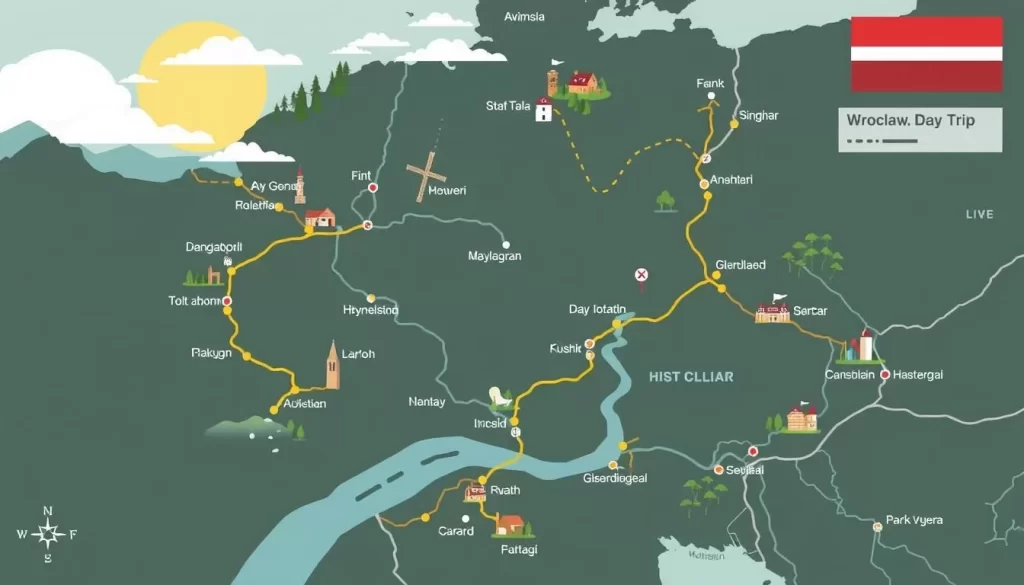
Peace Churches of Jawor and Świdnica
The UNESCO-listed Peace Churches in Jawor and Świdnica are extraordinary wooden religious buildings constructed in the 17th century. These remarkable churches were built without using a single nail and feature stunning baroque interiors with intricate paintings. Located about an hour’s drive from Wrocław, they are a must-visit for anyone interested in history and architecture. You can take a train or drive to these locations, with the journey taking around 1-2 hours.
The Peace Churches represent rare surviving examples of Protestant churches built during a time of Catholic dominance, making them among the most unique things to see near Wrocław.
Other Nearby Attractions Worth Visiting
If you’re looking for more day trip ideas from Wrocław, consider visiting Książ Castle, the third-largest castle in Poland, or Czocha Castle, both of which offer fascinating glimpses into the region’s noble history. Nature lovers can head to Karkonosze National Park in the Giant Mountains, accessible by train to Jelenia Góra (about 2 hours) plus a short bus ride, offering beautiful hiking trails and spectacular mountain scenery.
For those interested in industrial heritage, the historic gold and arsenic mines in Złoty Stok provide a fascinating underground tour. Alternatively, explore the mysterious Project Riese, an unfinished Nazi underground complex, for a more somber but historically significant experience.
Practical Information for Visiting Wrocław
To make the most of your visit to Wrocław, it’s essential to know the best ways to travel to and within this vibrant city. Wrocław is a city that offers a blend of history, culture, and entertainment, making it a must-visit destination in Poland.
How to Get to Wrocław
Wrocław is easily accessible by air, train, or car. The city is served by Copernicus Airport, which offers direct flights to many European destinations. For those traveling from further afield, connecting flights through major European hubs are readily available. Alternatively, you can travel by train to Wrocław Główny, the city’s main train station, which is conveniently located in the city center and offers connections to major Polish and European cities.
For travelers within Poland, booking train tickets through the Polish railways website is recommended, although the site is only partially in English. For international trains, booking in advance via Omio or Trainline can secure better prices.
Getting Around the City
Once in Wrocław, getting around is straightforward thanks to an efficient public transportation system comprising trams and buses. A 30-minute ticket costs just 3 zlotys (less than $1 USD), allowing for transfers between vehicles within that timeframe. Tickets can be purchased at newspaper stands or ticket machines; it’s advisable to have a ticket before boarding, as drivers may not always be willing to sell tickets.
The historic center is also very walkable, with major attractions within a 20-minute walk of each other, making it easy to explore on foot.
![]()
Where to Stay in Wrocław
Choosing where to stay in Wrocław depends on your preferences. For convenience, consider hotels near the Market Square, such as PURO Wrocław Stare Miasto. Those looking for a vibrant atmosphere might prefer the Four Temple District, known for its restaurants and nightlife. For a more local experience, Nadodrze is a hip neighborhood with plenty of amenities.
| Neighborhood | Recommended For | Notable Hotels |
|---|---|---|
| Market Square | Convenience to major attractions | PURO Wrocław Stare Miasto |
| Four Temple District | Restaurants and nightlife | Hotel Europeum |
| Nadodrze | Local experience | The Bridge on Cathedral Island |
Best Time to Visit
The best times to visit Wrocław are during late spring (May-June) and early fall (September), when the weather is pleasant and tourist crowds are smaller. Summer offers numerous outdoor events, while winter brings the magical Christmas Market to the city.
Why Wrocław Should Be Your Next European Destination
Travelers seeking a less crowded yet richly rewarding European experience should consider Wrocław. This vibrant city offers an authentic Polish experience without the overwhelming tourist crowds found in more famous European cities. You can enjoy world-class attractions, beautiful architecture, and delicious food at a fraction of the cost.
Wrocław’s compact size makes it perfect for a 3-4 day visit, with enough best things to do to keep you engaged. Unlike many European destinations that have become overly commercialized, Wrocław maintains its authentic character while still providing all the amenities and comforts that international travelers expect. Its central location also makes it an excellent base for exploring other major cities like Prague, Berlin, Warsaw, and Krakow.
The value for money in Wrocław is exceptional, with high-quality accommodations, dining, and activities available at prices that will make your travel budget stretch much further. With its unique charm, fascinating history, and vibrant food scene, Wrocław embodies everything travelers love about European cities. It’s a guide to a travel experience that will leave you planning your return visit before you’ve even departed.
The above is subject to change.
Check back often to TRAVEL.COM for the latest travel tips and deals.
